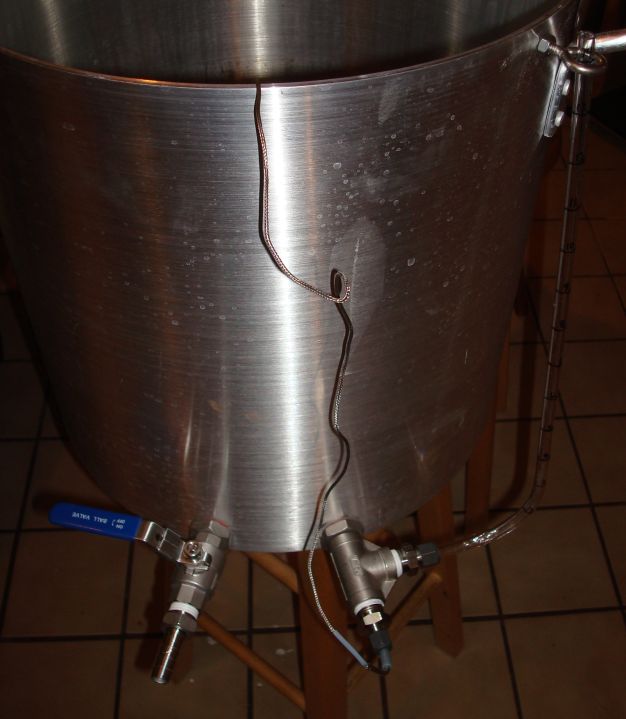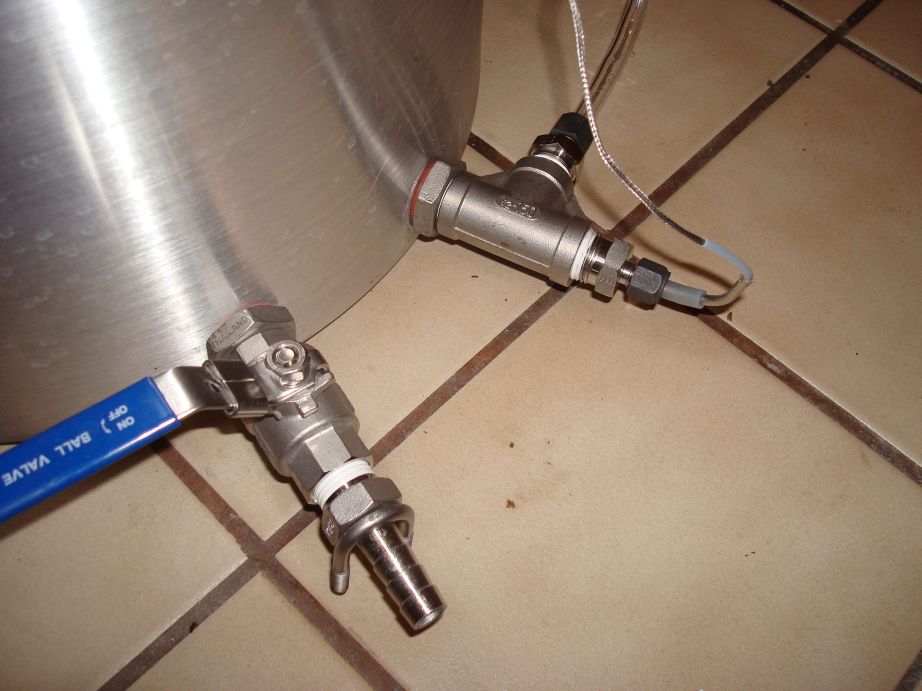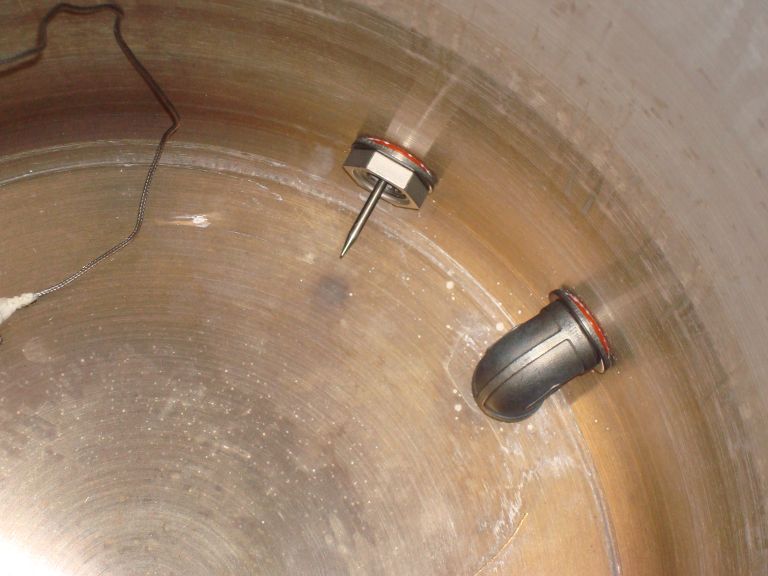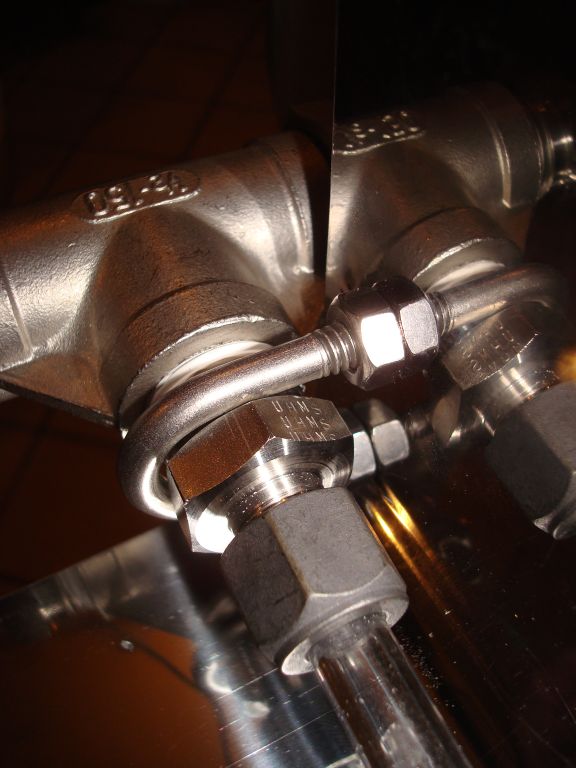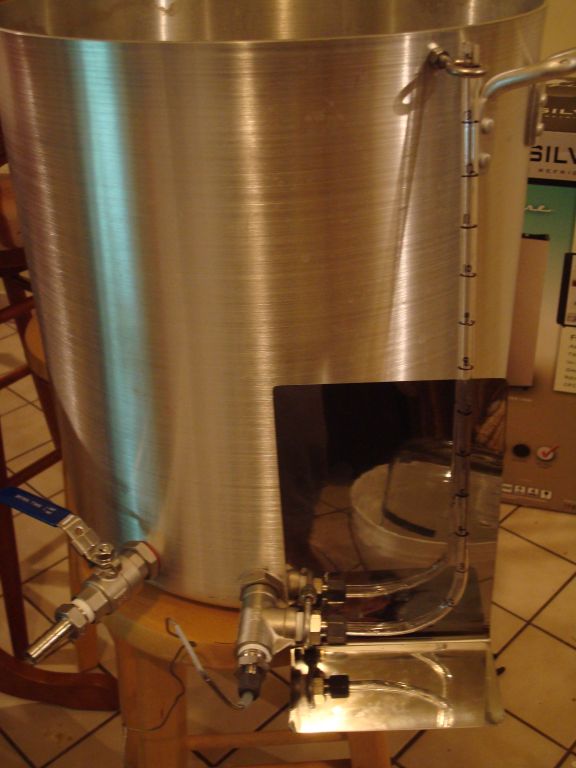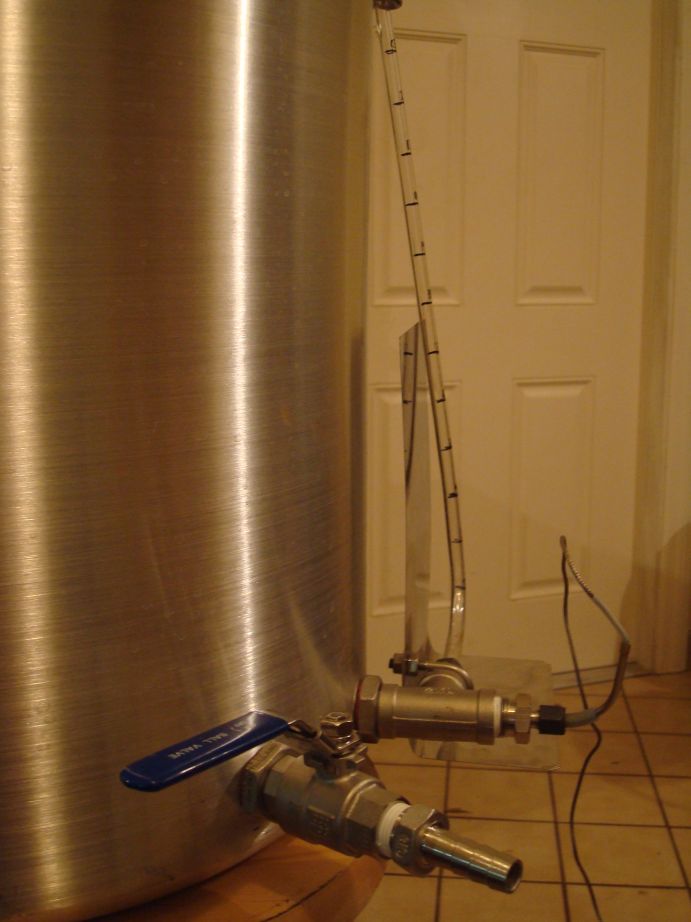greenbirds
Well-Known Member
- Joined
- May 15, 2008
- Messages
- 441
- Reaction score
- 9
I installed a sight gauge from Bargain Fittings in my keggle and really like knowing my exact volume. With the fitting mounted as low as possible, and with the elbow/compression fitting eating up about 2 inches, it doesn't start reading until ~ 3.5 gallons. That's fine for 5 or 10 gallon batches.
So I want to install one on my HLT, which is a 15 gallon aluminum stock pot. Given the diameter of the pot (wider than a keg), even having the sight gauge start reading 2-3" off the bottom could result in not seeing what my volume is until ~ 4 gallons or so. That means wasting propane if I want to use the sight gauge to measure my sparges, since I have to fill the water up higher in the HLT.
So here's my idea: flip the T-fitting upside down, and bend a piece of polycarbonate tubing Pol Style into a U. The lower dotted line shows where the sight glass could start reading then, and the upper one shows approximately where it would be normally.
Any thoughts? Am I missing something here? Obviously the photo is not to scale, and the 'U' would be perpendicular to the fitting -- this was just easier to draw. The comp. fittings are also bigger/cover up more in real life. I am somewhat concerned about heat from the burner melting the gauge. Might have to make a heat shield.
And yes that is MS Paint.

So I want to install one on my HLT, which is a 15 gallon aluminum stock pot. Given the diameter of the pot (wider than a keg), even having the sight gauge start reading 2-3" off the bottom could result in not seeing what my volume is until ~ 4 gallons or so. That means wasting propane if I want to use the sight gauge to measure my sparges, since I have to fill the water up higher in the HLT.
So here's my idea: flip the T-fitting upside down, and bend a piece of polycarbonate tubing Pol Style into a U. The lower dotted line shows where the sight glass could start reading then, and the upper one shows approximately where it would be normally.
Any thoughts? Am I missing something here? Obviously the photo is not to scale, and the 'U' would be perpendicular to the fitting -- this was just easier to draw. The comp. fittings are also bigger/cover up more in real life. I am somewhat concerned about heat from the burner melting the gauge. Might have to make a heat shield.
And yes that is MS Paint.



